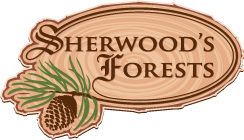Ornamental Birches
Weeping Birch, Royal Frost, Parkland Pillar, and Dakota Pinnacle
All four of these are imports: One from Europe, the other two from Asia, and one that is a hybrid from three continents. Cultural requirements are similar to birch in general. The pests section for weeping birch applies to the Asian birches too.
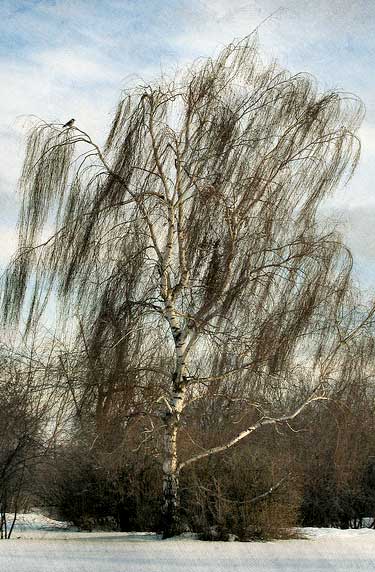
Weeping Birch, awaiting a new spring dress. Even in winter there is grace and elegance.
This shows the branch structure and how pendulous the twigs are.
European Cutleaf Weeping Birch
Betula pendula laciniata
I resisted weeping birch for a long time. They get Bronze leaf borer, a problem with all birch, but especially foreign ones. But I've fallen in love with their grace, and people keep asking for them. Who am I to resist a new tree?
See the general page on Birches for using birches in the landscape.
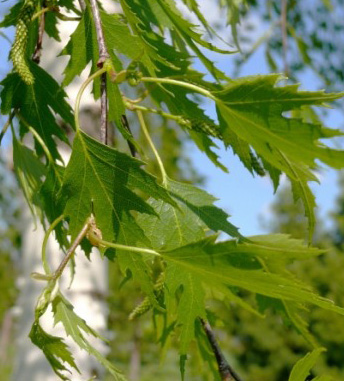
Delicate leaves.
Features
- Fragile looking graceful leaves on long chocolate brown hanging twigs.
- Clean yellow fall foliage
- White bark. This is especially noteworthy when you have trees with contrasting bark nearby.
- Flower pollen is early spring bee food.
- Mature size variable but about 40 feet tall x 25 wide.
- Open crown permits light through to ground.
Growth Requirements for All Birch
- Moist area, or permanent commitment to water. Very graceful addition to a pond.
- Any soil that is both draining, and consistently moist will work. Loamy, loamy silt, or loamy clay soils. High organic matter ok. Fast draining soils (sandy, rocky) tend to dry out. Heavy clay soils don't have enough drainage. As you work on steeper slopes, you can use heavier soils. Sandy soils acceptable with high water tables ( within 2 feet of surface)
- Full to 50% sun.
- Water 3 times per summer while getting established. Soak a circle with radius equal to the height of the tree with 4-6 inches of water. An oscillating sprinkler puts down about an inch an hour. Water when the top two inches of soil are dry.
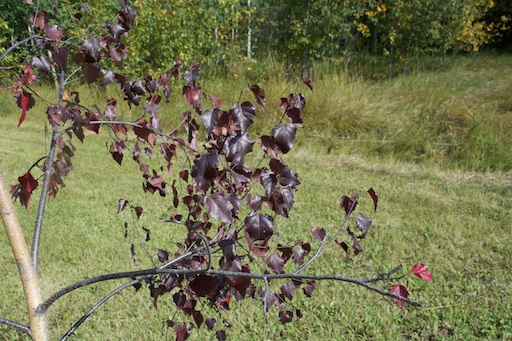
In summer Royal Frost looks the leaves have been dipped in dark chocolate.
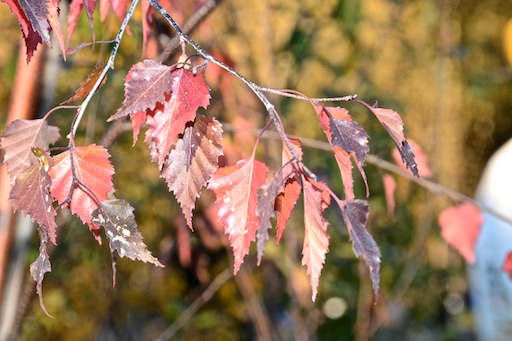
In fall it's NOT YELLOW. A big win here on the prairies.
Royal Frost
Royal Frost is a hybrid of of several birches. One parent is Grey birch, a birch native to hardwood forests of eastern North America. The other parent is a hybrid of a European weeping birch, and Asian birch.
Features:
- While described as 'red' or 'burgundy' my experience has been that'chocolate' is a better description of the colour.
- Royal Frost has a very open crown. Leaves are small, delicate looking. This is a nice accent tree.
- Sun penetrates the crown. Because the crown is so open, it
I've had one in my demo garden for 4 years now. Seems to winter ok. Pics to come.
Parkland Pillar Asian Birch
Betula platyphylla 'Jefpark'

In summer Parkland is a good screening tree.
Head height width of Parkland at maturity is about 3-4 feet. It will be around 8 feet at it's widest point. In generaly the widest point is about 1/3 of way up the tree.

Just turning colour. The proportions remain about the same as the tree grows, with a fairly constant angle with the base. It will get 6-8 feet wide, but that wide point is overhead. This make for a good screening tree. You can prune the bottom branch tips if you find it intrudes over a path or into your yard.
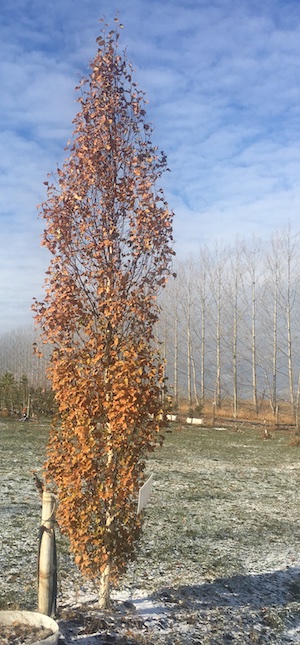
The leaves are losing their yellow. But they are still there. Look at the trees in the background. They are bare twigs now. This shot was taken in November. It was a late fall. Snow has come and gone twice already, and we got another dusting the night before. And it still has leaves.
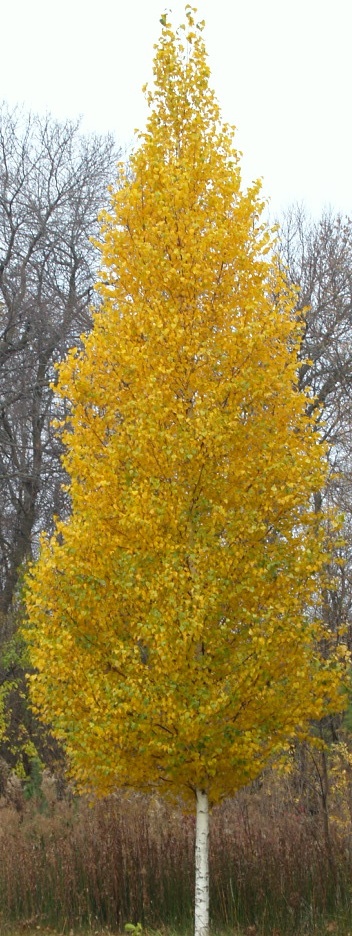
Notice that where Parkland Pillar has a narrow branch angle, Dakota Pinnacle just has shorter branches. The result is that the wide part of the tree is closer to the bottom. This makes it more effective as a screening tree if you don't have a fence, but it is a wider tree -- about 10-12 feet at maturity.
Parkland Pillar is one of our skinny trees -- trees that you can use a row full to change your backyard into less of a gladiator's arena subject to the view of upstairs windows and balconies of surrounding houses.
This tree can make quite a statement as a driveway liner, especially with a backdrop of spruce. Put both trees on 15 foot spacing, with 12-15 feet between the two rows, with the birch covering the gaps. When young they won't look full enough. Put a dogwood between the birches, and a high bush cranberry or flame willow between the spruces. This will fill in fairly quickly and you will have a good fall and winter display too.
Dakota Pinnacle is a slightly wider tree. This gives it a more full appearance.
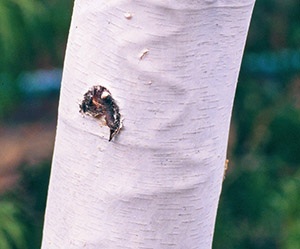
The beasties munching leave a trail.
Pests and Diseases
- Bronze Birch Borer. This can kill your tree. Maintaining a high population of bug eating birds, and reducing stress by watering the tree are key to prevention. All three of these birches are susceptible. The beetle larva feed on the inner bark, disrupting water transport. Keeping your tree well watered helps them resist. (The tree drowns the larva in sap.) Adding a large mulch circle around your trees conserves soil moisture. Avoid fertilizing mature trees, as this increases water stress.
European and Asian birches are the most susceptible, followed by our native paper birch. River birches seem to be immune. More info aboutBronze Birch Borer and Bronze Leaf Borer at U. Minn
- Birch Leaf Miner Usually a minor pest out side of very high density seedling nurseries. A healthy tree is at no risk, although the tattered appearance of the leaves is unsightly. Keep the tree watered. Leaf Miner
Special Notes.
- Roots spread a long ways from the tree. Keep away from septic fields.
Inventory for native birch in the main Birch & Kin page.
Got something to say? Email me: sfinfo@sherwoods-forests.com
Interesting? Share this page.
Want to talk right now? Call me: (8 am to 8 pm only, please) 1-780-848-2548
Do not arrive unannounced. Phone for an appointment. Why? See Contact & Hours That same page gives our hours of operation.
Back to Top
Copyright © 2008 - 2021 S. G. Botsford
Sherwood's Forests is located about 75 km southwest of Edmonton, Alberta. Please refer to the map on our Contact page for directions.
